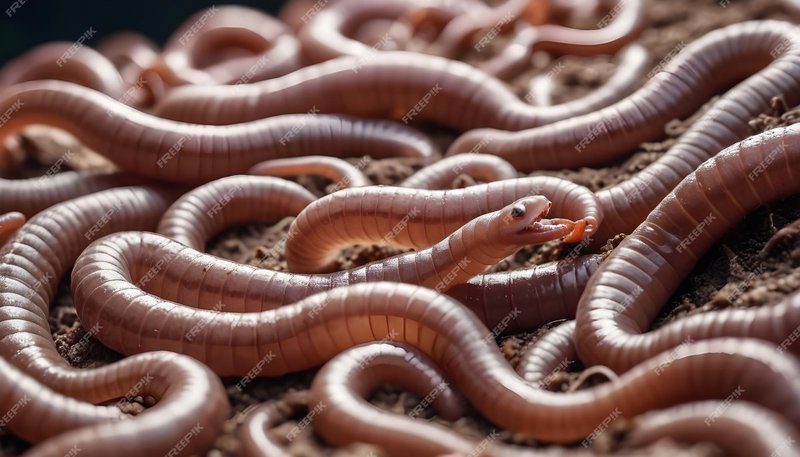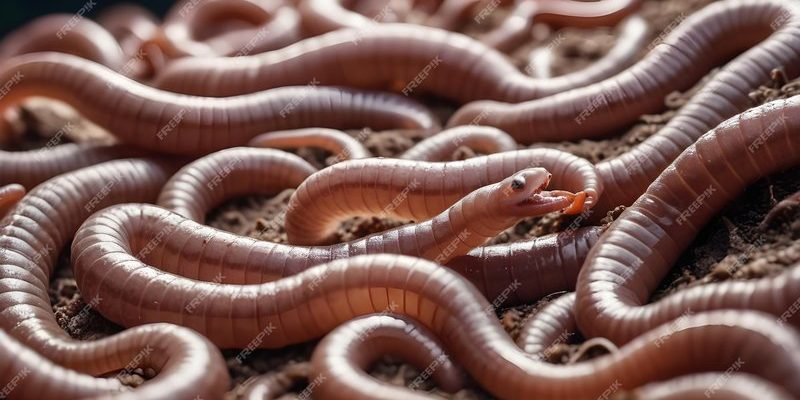
Worms play essential roles in our ecosystems, from breaking down organic matter to enriching the soil. But have you ever wondered if it’s possible to keep them in captivity for research or commercial purposes? Spoiler alert: the answer is yes! In this article, we’ll explore the ins and outs of segmented worms in captivity, discussing their potential for study and farming, and what you need to know to get started.
What are Segmented Worms?
Segmented worms, or annelids, are fascinating creatures. Their bodies are made up of numerous repeating segments, which allows for incredible flexibility and movement. Think of it like a soft, flexible caterpillar that can wiggle and squirm its way through different environments. This segmentation also enhances their ability to burrow, making them vital contributors to soil health.
These worms come in various types, ranging from familiar earthworms to marine varieties like the ragworm. Earthworms, for example, are champions of composting. They break down organic material, transforming it into nutrient-rich humus which enriches the soil. On the other hand, marine segmented worms are often colorful and vibrant, adding beauty to their ocean habitats.
So, why are they important to us? Aside from being essential for soil health, segmented worms are also used in scientific research. They offer insights into environmental changes, soil biology, and even genetics! The more we understand them, the better we can appreciate their roles in our ecosystems.
Can You Keep Segmented Worms in Captivity?
Absolutely! Keeping segmented worms in captivity is not only possible, but it can also be quite rewarding. Many researchers and hobbyists enjoy maintaining worm farms or doing experiments with them. Keeping worms in a controlled environment allows for detailed observation and study of their behaviors and ecological impacts.
When setting up a worm habitat, you’ll want to consider several factors. Temperature and moisture are crucial; worms thrive in a cool, damp environment. A simple worm bin made from a plastic container works well. Just ensure it has air holes for ventilation. Adding bedding material, like shredded newspaper or coir, is essential for creating a cozy space.
You might be wondering what to feed these wiggly pals. They love organic matter! Things like vegetable scraps, coffee grounds, and eggshells can be great additions. Just be sure to avoid dairy, meat, and oily foods. This will keep your worm bin healthy and smell-free.
Studying Segmented Worms: What’s the Appeal?
Studying segmented worms can provide valuable insights into broader environmental issues. For instance, they are indicators of soil health. Their presence often signals good soil quality, while their absence can indicate problems like pollution or poor management practices.
Researchers utilize these worms to study everything from decomposition processes to nutrient cycling. By observing their behavior and growth patterns, scientists can learn about the impacts of climate change on ecosystems. For example, how do increased temperatures affect their reproduction rates? What role do they play in the cycling of carbon?
Additionally, some studies focus on the medical potential of segmented worms. Their regenerative abilities—how they can regrow lost body parts—can offer insights into healing and regeneration in humans. It’s like opening a tiny treasure chest of biological mysteries!
Farming Segmented Worms: A Sustainable Approach
Farming segmented worms, particularly earthworms, is gaining popularity as a sustainable practice. Worm farming, known as vermiculture, has benefits beyond just producing compost. It can serve as a food source for fish, birds, and even humans. Yes, you read that right! Some cultures utilize worms in their diets as a nutritious protein source.
To start a worm farm, you’ll need to select the right species. Red wigglers are particularly popular for composting because they thrive in rich, organic environments. You’ll want to create a suitable habitat for them, just as you would for studying them.
Worm farming can also be a great way to manage food waste. Instead of throwing away your kitchen scraps, you can feed them to your worms, turning waste into nutrient-rich compost. Not only does this help reduce landfill waste, but it also provides you with high-quality fertilizer for your plants.
Common Challenges in Keeping Worms
Like anything else, keeping segmented worms comes with its challenges. One common issue is maintaining the right moisture level. If your worm bin is too dry, the worms can become stressed and may die. Conversely, if it’s too wet, it can lead to mold growth and unpleasant odors. A balanced moisture level is key.
Another challenge is pest management. Fruit flies may find your worm bin inviting, which can be annoying. To prevent this, be mindful of the food scraps you add. Always bury food beneath the bedding to minimize odors and discourage pests. Also, ensure the bin is well-ventilated.
Lastly, overfeeding can be a problem. It’s easy to think that more food means happier worms, but too much food can lead to anaerobic conditions in the bin. A good rule of thumb is to start small and gradually increase the amount of food as you observe how quickly your worms are consuming it.
The Future of Segmented Worm Research and Farming
As we move forward, the future of segmented worm research and farming looks bright. With growing interest in sustainable practices and environmental conservation, these little creatures are gaining more recognition for their contributions. Researchers are continuously exploring new ways to utilize worms for soil health, waste management, and even biomedical applications.
Innovative farming techniques are emerging, utilizing technology to enhance worm farming processes. For example, automated monitoring systems can track temperature and moisture levels, helping farmers maintain ideal conditions for worm health. This means better yields and healthier ecosystems.
As more people become aware of the benefits of segmented worms, we might also see an increase in educational programs focusing on vermiculture. Teaching young minds about these creatures can inspire future generations to value sustainable practices and ecological research.
In summary, segmented worms are not just squirmy little creatures; they’re a treasure trove of possibilities for research and sustainable farming. Whether you’re interested in studying them for scientific insights or farming them for compost and food, there’s a whole world to explore. With the right setup, care, and knowledge, you can enjoy the benefits of keeping segmented worms in captivity, while also contributing to a healthier planet. So why not dive in? Your journey into the captivating world of segmented worms awaits!

